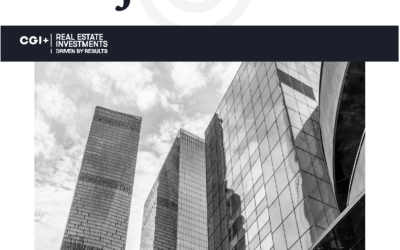Weak consumer spending and an uncertain economic climate have caused the industrial sector to fall victim to tepid growth, according to analysts. While industrial REITs in the United States continue to make small strides towards improved performance, observers predict that 2013 will continue the pattern of slow and steady growth.
John Stewart, senior analyst with Green Street Advisors, said fiscal austerity will curtail economic growth in 2013 and a “new normal” long-term forecast remains in place for the industrial sector.
“The NOI growth forecast is essentially unchanged,” he said.
Jason Lail, manager of the real estate research group at SNL Financial, agreed that industrial REITs have made some headway in the past year, but growth will continue to be modest.
“Industrial REIT performance has improved some year-over-year,” said Lail, adding that while median funds from operations (FFO) growth was 1.3 percent for the third quarter of 2012, it was better than the sector’s posted median FFO growth of just 0.4 percent for the third quarter of 2011.
Lail noted that projected FFO growth in 2013 is lower for industrial REITs than the broader REIT market. Research firm FactSet is projecting growth of 3.7 percent for industrial REITs, compared to 8.4 percent for the REIT market at-large.
Philip Kibel, senior vice president for commercial real estate finance with ratings agency Moody’s, said he’s projecting “stable to positive” performance for the industrial sector in 2013, “continuing the trend of improved same-property net operating income from the third quarter of 2012.”
He added that that positive credit trends, including a low supply of new property, solid tenant quality, diversification and high retention rates, are positives for the sector.
“Rated industrial REITs still have large unencumbered portfolios with good quality assets and modest on-balance-sheet secured debt levels,” said Kibel, adding that continued stabilization will occur assuming there’s no recession in the U.S. and no large sovereign defaults in Europe.
Tom Bisacquino, president and CEO of the National Association of Industrial and Office Properties (NAIOP), said that while the industrial sector overall is healthy, the larger markets and operators have an advantage. One of the challenges for the sector going forward is “how to get the small- to medium-sized business person back in the game,” he said.
“What’s happening is that a lot of our members who are the bigger industrial operators are doing well. Vacancy rates have dropped. But the smaller operator has not come back, and they are not doing well,” he said.
Bisacquino said e-commerce is one of the biggest factors impacting the sector and he expects that to grow.
Source: REIT.com

